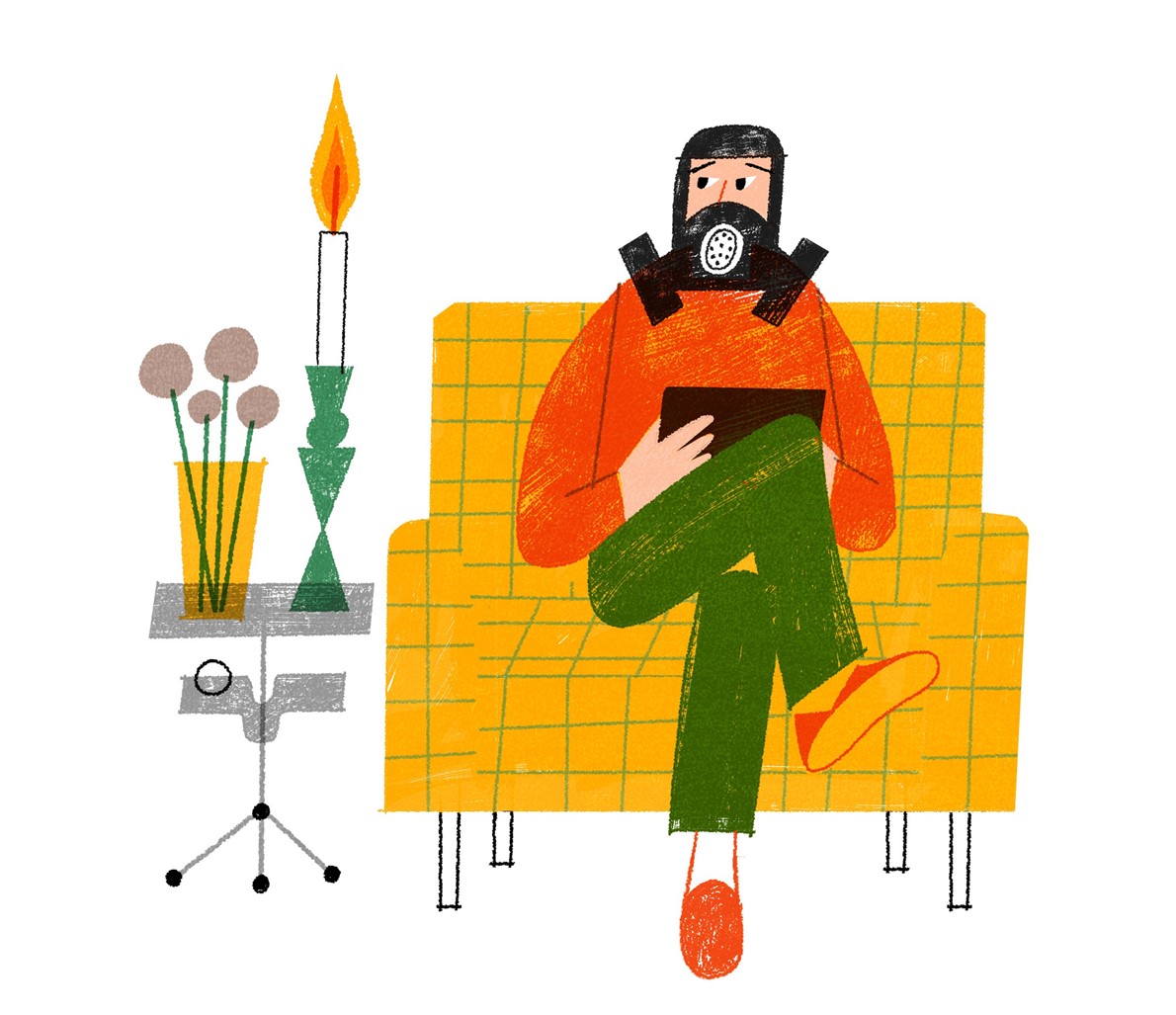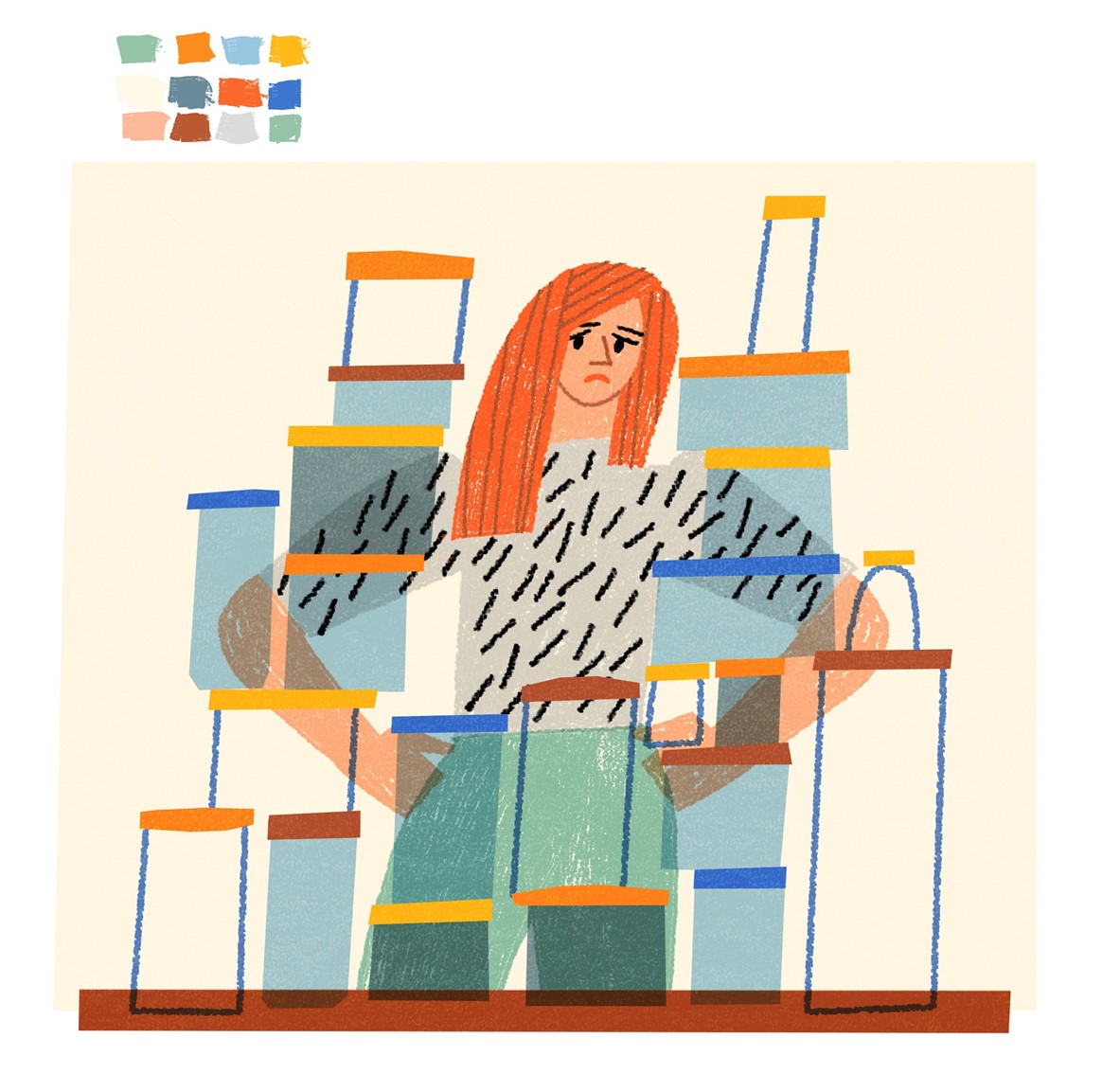The question is: “I’ve heard some candles can create indoor
air pollution and even be harmful. Are there safer alternatives?”
Paraffin, the wax from which many candles are made, is
derived from petroleum. When it burns, it emits toxic fumes. These irritate
some people’s eyes and can also exacerbate asthma and other respiratory
conditions. Synthetic fragrances and colors can also produce irritating fumes.
On top of that, some wicks contain lead (to make them firmer), which is
released into the air.
اضافة اعلان
Alternatives include beeswax as well as waxes made from soy,
coconut, rapeseed, and other oils. Some vegans do not support the use of beeswax
because it is an animal product, and some feel the beekeeping industry is not
cruelty-free. Soy wax is certainly more sustainable than petroleum, but its
possible negatives include the use of pesticides. (Look for organic soy wax.)
The other vegetable waxes mentioned are relatively clean.
Be sure to read the fine print. I was recently lured in by a
candle from a well-known brand that was “formulated with vegan-friendly
ingredients” only to find it also contained paraffin. So make sure you are
getting 100 percent of whatever alternative wax you seek. Also, check to see if
artificial scents or other chemicals have been added. (Choose candles scented
with nothing but essential oils.) Look for wicks that are made from cotton,
wood or hemp — and glass containers that can be recycled or reused.

Organic Savanna candles, poured in Kenya, are handmade from
organic soy wax and locally sourced ingredients. One hundred percent of profits
from the sale of the candles helps create jobs for Kenyan women and fund children’s
education. Les Crème candles have pure organic coconut wax and cotton wicks.
Hive to Home candles incorporate locally sourced beeswax, organic coconut oil,
cotton wicks and sustainable packaging. Rapeseed wax candles are harder to
find, especially in the US. But plenty of places sell the wax itself if you are
a candle maker.
The other question is: “My kitchen feels like a toxic waste
dump filled with plastic bags and storage containers, plastic wrap and more.
Are there better choices?”
Indeed there are. Plastic containers have gotten a lot of
negative press, especially those that contain Bisphenol A, or BPA, which has
been discovered to be an endocrine disrupter linked to all kinds of potential
health issues and is banned in many states. Now we are swimming in BPA-free
plastics. Unfortunately, these can contain Bisphenol S (BPS), which is
chemically similar.
An alternative is glass or metal storage containers with
silicone lids. (Silicone is not perfect because many communities do not recycle
it, but it is primarily made from a naturally derived material, silica, and
lasts much longer than plastic.) Brands include Ikea, Pyrex, and Public Goods.
You can also reuse screw-top glass jars. (If the original
housed something aromatic like garlicky dill pickles, you will want to run the
lid through the dishwasher first.)
Plastic wrap and even some wax paper also contain materials
derived from petroleum. Also, they are (generally) one-time-use products, so
they keep your bowl of guacamole fresh for a day before off to the landfill
they go.
But there are plastic-free wraps, typically cotton fabric
coated with some sort of wax, that can be used repeatedly to cover a jar or
bowl, or wrap a piece of cut fruit or a wedge of cheese. They don’t last
forever but they are typically compostable (or can be used as fire starters). I
find they sometimes pick up odors, but a thorough wash in cool water and mild
soap, followed by a thorough air dry freshens them. Bee’s Wrap has two versions
— one coated in beeswax, the other in a vegan-friendly soy-coconut wax blend.
Another clever product is Food Huggers, which are a set of
five sizes of colorful, stretchy discs made from food-grade silicone. They are
dishwasher, freezer, and microwave safe. You can use them as jar lids or slide
them over the cut end of a lemon, onion, apple or other produce. The company
also makes silicone “Hugger Bags” that take the place of plastic food storage
bags.

“I’m interested in trying natural fabric dyeing but am
afraid it’s really complicated. Where can I find out more?”
Making dye from plants and animals goes back to ancient
times and has been done by nearly all cultures. Today there is a community of
dyers you can tap into for information, ideas and supplies.
I have long been a fan of indigo, a plant in the bean family
whose leaves — when soaked and fermented — produce a beautiful deep-blue dye.
Other colors can be produced using flowers, roots, berries, fruit and vegetable
peels, wood, and even insects.
The Bible mentions a particular blue dye color, called
tekhelet, whose exact formulation has been lost but is thought to have come
from a secretion of sea snails.
But you are right. It is often more complicated than simply
boiling some flower petals and dunking in a piece of fabric — especially if you
want the dye to be durable and stay uniform over time.
Botanical Colors, based in Seattle, offers education and
natural dyeing materials. They support farmers and organic and regenerative
farming, organizing workshops locally and sometimes in other parts of the
country, on topics including dyeing with mud, indigo, persimmon tannins and
more. They also have a biweekly online show called Feedback Friday, which began
during the pandemic. The group’s president, Kathy Hattori, and sustainability
and communications director, Amy DuFault, speak with artists, writers and
scholars about natural dyeing and color.
Maiwa, based in Vancouver, British Columbia, sells a large
range of materials for the natural dyer as well as downloadable instructions
(“How to Dye With Indigo,” for instance), books, and fabrics. They promote
“Slow Clothes,” or the contributions of hand spinners, hand weavers and natural
dyers as an antidote to mass production. They also offer classes, many of them
free, through their School of Textiles.
Read more Fashion
Jordan News







